Mayors from Mindanao have become more eager to push the materialization of the long-dreamed Mindanao Railway System (MRS) which they hope to expect initial operations by 2013. The MRS is one of the three priorities that were presented before the League of Cities of the Philippines (LCP) led by Pagadian City Mayor Samuel Co, also the LCP’s vice president for Mindanao. The other two priorities were the conversion of at least 16 Mindanao municipalities which is currently pending before the Supreme Court (SC) and the plan to have a mayor candidate from Mindanao for president to the LCP. “As of now, there are no other better projects for Mindanao that will contribute a total development except the Mindanao Railway System. We had agreed to fully support this project that will benefit all of us as far as boosting the island economic condition is concerned,” Co said. According to the initial strategic railway development plan for Mindanao, the project aims to connect urban centers and provincial capitals in Mindanao such as Zamboanga, Pagadian, Dipolog, Iligan, Cagayan de Oro, Marawi, Cotabato, and Davao cities. Project estimates have placed the total project cost at P66.5 billion (approximately $1.33 billion). Construction of the Mindanao railway project is scheduled to start in 2011 with the initial phase connecting this city and the new airport in Laguindingan, Misamis Oriental. The railway project is envisioned to connect the rural and urban centers in Mindanao and is expected to boost commercial and industrial progress along the rail routes, including far-flung areas. Since the backbone of national transport system has always been railways in Japan, United States (US) and other European countries, the construction of the railway is expected to address the needs of long-distance passengers, as well as the cargo and commercial requirements in the area. SEE RELATED POST
 The P7.853-billion ($167.09- million) international airport in this municipality is 65-percent complete and will be closer to completion once the new Aquino administration takes office. The Laguindingan International Airport is set for completion by year- end 2011 and should be operational by January 2012. Ryan B. Gico of the Laguindingan Airport Development Project (LADP-PMO) Project Management Office, said that civil works and building construction were already 65-percent complete as of May 14.
“We have already reached, as of May 14, a 65-percent completion rate of the airport’s civil works,” he said in a recent interview at the LADP-PMO located above the airport site. Gico said other requirements for the full operation of the airport, such as access road, were completed in January. “Land acquisition for the main airport area is 99.24-percent accomplished, with 390.95 hectares already acquired,” he said. The main airport, he said, requires 393.94 hectares of land.
The Laguindingan Airport Development Project is a priority concern under the 2004-2010 Medium-Term Philippine Development Plan. He said occupants of the airport site have already been relocated to brand-new houses. Each family was also given relocation fees. He said 370 families have been relocated: 134 families at Phase 1 resettlement site in barangay San Isidro and 236 families at Phase 2 resettlement site in barangay Tubajon, both in Laguindingan.
Gico said the Department of Transportation and Communications (DOTC) is now acquiring the needed navigation facilities and equipment component of the project. Funds for their acquisition are provided by the Korean Export-Import (Kexim) Bank through a loan, he added. The airport sits on a 4.17-square- kilometer site in barangay Moog in this municipality. It is 46 kilometers from the existing Lumbia Airport in neighboring Cagayan de Oro City.
Once completed, it will be the fourth International airport in Mindanao, after Francisco Bangoy International Airport in Davao City; Zamboanga International Airport in Zamboanga City; and General Santos International Airport in General Santos City. It will also have the distinction of being the first international airport in Northern Mindanao.
The airport is the flagship project of the Cagayan de Oro-Iligan Corridor Special Development Project, which covers both cities of Iligan and Cagayan de Oro, as well as five coastal towns in Lanao del Norte and 22 towns of Misamis Oriental’s first and second congressional districts.
The airport will primarily replace the existing Lumbia Airport in Cagayan de Oro City, and also expected to replace Maria Cristina Airport in Iligan City. It was learned that on May 18, a five-person team from the Economic Development Cooperation Fund (EDCF) appraisal mission on LADP-Air Navigation Aid System Supply Project visited Northern Mindanao for a site survey and to conduct fact-finding activities for the subproject. The team visited the Lumbia Airport Control Tower in barangay Lumbia, Cagayan de Oro City, to appraise the airnavigation system equipment there.
The team, composed of Chang Young-hoon, mission leader and director of EDCF Department, Kexim Bank; Yi Ji-Eon, deputy director, EDCF Department, Kexim Bank; Woo Binnah, manager, EDCF Department, Kexim Bank; Chai Seung-su, technical consultant of Inha University; and a specialist of Air Navigation Aid System from MLTM (Ministry of Land, Transport and Maritime Affairs) were accompanied by Felicisimo C. Pangilinan Jr. of DOTC’s Air Transport Planning Division.
In Photo: Rolando G. Tungpalan (center), deputy director general of the National Economic and Development Authority (Neda), watches as Transportation Assistant Secretary for Planning Ildefonso Patdu Jr. (left) exchanges copies of the Laguindingan airport air-navigation system and support facilities supply project agreement with Korea Eximbank mission director Chang Young Hoon (right), who also represents the Economic Development Cooperation Fund (EDCF). The agreement was signed on May 21 at the Neda. The proposed inancing plan, which is partly a loan from the EDCF, has a total cost of $15.82 million.
Written by Bong D. Fabe / Correspondent Business Mirror
The Mallberry Suites Expansion Project is now on its final stages of construction. The tower crane, a fixture last year during its construction has been removed.
Based on photos below, the extension (Building B) I think is ready for occupancy as airconditioning units are already installed. Work is now focused on the 10th floor of center building (Building C) aside from painting of the exteriors.
The following photos were taken from different points, namely: Gaisano Mall Food Court, and along Osmeña Street.
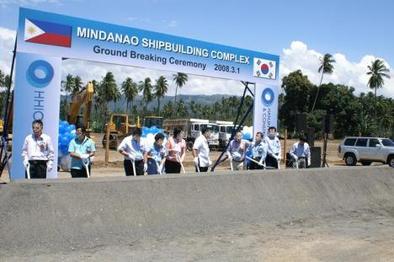 Korea’s giant shipbuilder Hanjin Heavy Industries and Construction Co.-Philippines (HHIC-Phils.) has remained interested in pursuing its P8-billion expansion project in the Phividec Industrial Estate in Tagoloan, Misamis, Oriental.
Philippine Economic Zone Authority Director General Lilia B. De Lima told reporters at the sidelines of the 15th PEZA Investors Recognition Night that Hanjin officials conveyed this message late last year. According to De Lima, the Korean shipbuilder is just closely watching the economy following the global financial crisis, which took a heavy toll among shipbuilders and shipping firms. “They are just waiting for the right time,” she said.
Hanjin had registered with PEZA in 2008, but it had a tiff with the local government unit in Misamis Oriental that also caused some delays in the project’s implementation. The proposed project in Phividec was supposedly an expansion of Hanjin’s existing project in Subic Bay Freeport but on a larger scale.
“This is bigger than Subic because this is going to occupy a total of 450 hectares compared to Subic’s 200-hectares only,” De Lima said. Hanjin’s investments in Subic was placed at $1.6 billion and is employing more than 15,000 workers at the freeport. The company has been exporting ocean-going vessels made in Subic Freeport.
HHIC-Phils. officials said the company expects to produce more ships in Subic as the productivity in its shipyard here is fast catching up with Hanjin’s shipyard in South Korea saying the goal is to make the Philippine operations at par with its South Korean counterpart in terms of efficiency and quality of work.
Barely a month after Department of Public Works & Highays Secretary Hermogenes Ebdane, Jr. endorsed to President Gloria Macapagal Arroyo the release of an additional P200 million for its completion, work has resumed on the long delayed Cagayan de Oro International Trade and Convention Center. Latest photos of the site showed the roof trusses have been completed with quite a handful of workers seen.
The project which is located in Taguanao, Indahag, Cagayan de Oro City is the first ever world class Trade and Convention Center being constructed in Mindanao. It was implemented utilizing the Design-Construct Scheme and is ideal for national, international and trade exhibits, as well as seminars and conventions.
Boasting of a 7,700 seating capacity, the Convention Center has several amenities like a multi-purpose hall that could accommodate 1,000 guests, a convertible indoor playing court, an exhibit area for 1,500 viewing guests with demountable partition for flexibility of expansion, 12 function rooms for 1,000 guests, 4 clubrooms with lockers and showers, cafeteria with approximately 100 seating capacity, and an administrative office, storage room and other support facilities.
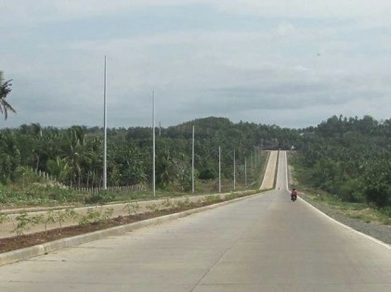 With the near-completion of the Laguindingan International Airport (LIA) and with the Mindanao Railway System (MRS) already in the drawing boards, business and trade are expected to increase in this part of Mindanao, which is why a Mindanawon congressman yesterday urged the government to draw up a comprehensive master plan for the revitalized Cagayan-Iligan Industrial Corridor (CIIC). “If we really want investors to pour in their millions and even billions of pesos in the CIIC, then we have to start developing a comprehensive master plan for it,” said Rep. Ariel Caringal Hernandez of Anak Mindanao party-list.
Noting that the international airport in nearby Laguindingan town is targeted to open on January 17, 2012, and the Saudi Fund for Development’s expression of willingness to fund the MRS, Hernandez said that this will be best complemented by a comprehensive master plan for the CIIC. The completion and opening of the airport in the municipality of Laguindingan will open the doors for investors and tourists to our shores. Thus, there is a great need to come up with a comprehensive master plan for the CIIC to really entice investors to establish their businesses here,” Hernandez said.
The CIIC, which lies within the provinces of Lanao del Norte and Misamis Oriental and within the regions of Northern Mindanao and Soccsksargen, is a 187-kilometer stretch of mainly coastal strip facing the bays of Iligan and Macajalar and has a total land area of 3,227 square km. The MRS is made up of a network of railways linking Cagayan de Oro City to Iligan City up to
Zamboanga City, and to the Agusan and Surigao provinces. It also has extensions to the cities of Davao and General Santos.
Construction of the first phase of the MRS project covering the Cagayan de Oro-Iligan stretch is being prioritized because it is an industrial and economic corridor. Rep.Rufus Rodriguez, who filed House Bill 1855 in 2008 creating the Mindanao Railways Corp., said the MRS “will not only solve traffic congestion in the city [of Cagayan de Oro], especially with the opening of the LIA and other urban centers of Mindanao, but will also boost tourism and business along its route. This will be a more efficient, cost-effective and fast mode of transportation linking all major cities and towns of Mindanao.”
The MRS will pass through the CIIC, which covers 19 municipalities: Claveria, Jasaan, Villanueva, Tagoloan, Opol, El Salvador, Alubijid, Laguindingan, Gitagum, Libertad, Initao, Naawan, Manticao and Lugait of Misamis Oriental; and Linamon, Kauswagan, Bacolod, Maigo and Kolambugan of Lanao del Norte. The CIIC has been designed as a major industrial, processing and trade zone, with the cities of Iligan and Cagayan de Oro as centers.
It is also considered as one of the investment destinations in Mindanao, with the following development roles: transshipment hub of Mindanao due to its proximity to domestic markets such as Cebu and Manila with the safest and shortest sea route; one of the major agri-industrial centers in Mindanao; trade and services center in Northern Mindanao; and power provider in Mindanao by harnessing the power of Maria Cristina Falls.
With these roles, the CIIC is an ideal location for investments in metals (engineering and metal works); construction and infrastructure; oleo chemicals and other basic chemicals; and agriculture, aquaculture and agro-forestry. Hernandez noted that while the CIIC has been touted as one of the investment destinations in Mindanao for more than a decade now, it has not really taken off and very few investors have actually established their businesses in the area because of the lack of a comprehensive master plan.
“The CIIC, despite its considerable potential for being the investment hub in Mindanao, has very limited growth in the past decade because of a lack of a master development plan. As such, an integrated comprehensive master plan or program aimed specifically at maximizing its fourfold roles is badly needed and should be drawn up as soon as possible, especially so that we can present this to the incoming president,” he said.
Written by Bong D. Fabe / Correspondent – Business Mirror
The completion of the more than P1.2 billion “coastal super highway” would be given priority among congressional projects in Cagayan de Oro City this year in order to decongest traffic in the city’s downtown district. Rep. Rufus Rodriguez, (2nd District, Cagayan de Oro City), said that reclamation of the coastal lines in Lapasan has gained headway and some 2-kilometer has already been reclaimed since the project’s phase 1 started early this year.
He said the phase 1 of the coastal highways starts at the Macabalan Port Area to settle at Gusa in the city’s east coast. The Department of Public Works and Highway has released some P600 million to initially start the super coastal highways that would traverse through Cagayan de Oro City’s north-east coast barangays Macabalan, Lapasan, Gusa, Agusan and Puerto. “It is a four-lane highway that would primarily be used for prime mover trucks, 24-footer cargo trucks and other trucking facilities that would certainly decongest traffic in downtown Cagayan de Oro,” Rodriguez, re-elected to the 15th Congress this year, said.
But it would be up to the City Council of Cagayan de Oro to legislate an ordinance requiring all trucks and prime mover equipment to pass through the super highway route instead of passing through the city’s congested downtown areas. He said the coastal highway will connect the newly completed P360-million bridged that connects Barangay Puntod and Kauswagan.
The second phase of the coastal highways would start from Gusa to Puerto, or roughly a total length of 10-kilometer, Rodriguez added. According to Rodriguez, demolition of shanties and houses along the shorelines would be minimal since highway engineers are seeing to it that these houses shall be spared from demolition.
“At any rate, owners of shanties and houses that would inevitably be demolished to give way to the construction of the coastal highways will be justly compensated,” Rodriguez added. When completed, the coastal super highway would perk up economic activity in this port capital city of Cagayan de Oro City.
The “super coastal highways” would also become one of the city’s major coastal attraction likened to Cebu City’s south road project which ran across Barangays Bato, Pasil, Alaska, Mambaling, Pardo and toward Talisay City.
|




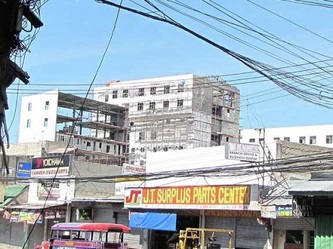

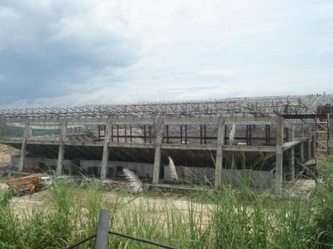

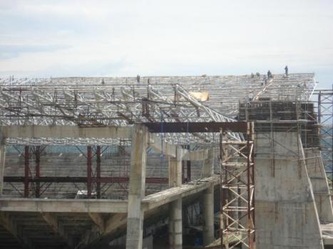

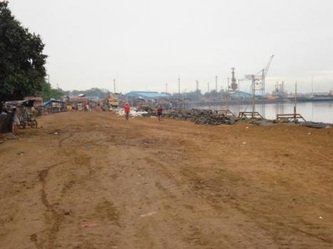
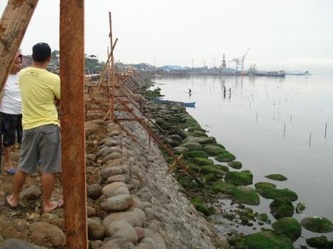

 RSS Feed
RSS Feed